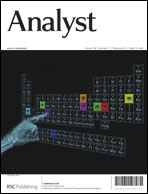Comparison of three multiresidue methods to analyse pesticides in green tea with liquid and gas chromatography/tandem mass spectrometry
Abstract
The aim of the present work was to compare and choose the best method to extract pesticide residues from green tea. Three different multiresidue methods were tested on blank green tea samples fortified with 86 pesticides (insecticides, fungicides and herbicides) at the 100 μg kg−1 level – modified QuEChERS (in order to limit the amount of coextractives, MgSO4 was replaced with calcium chloride in the clean-up step); ethyl acetate extraction (not SweEt) and miniLuke. Due to matrix complexity, samples were diluted five times. The extracts were analysed by GC-MS/MS and LC-MS/MS. During the experiment recoveries, the precision and influence of coextracted compounds were compared. The study carried out on the three methods showed that the best results were achieved using QuEChERS. In terms of recoveries, QuEChERS showed the highest performance – successfully analysing 75 compounds (87% of the total number) with recoveries from 70 to 120% – whereas the miniLuke and ethyl acetate methods had 54 (63% of the total number) and 31 (36% of the total number), respectively. In addition, QuEChERS extracts contained the least amount of co-extracted matrix components. All three methods provided very good precision.


 Please wait while we load your content...
Please wait while we load your content...